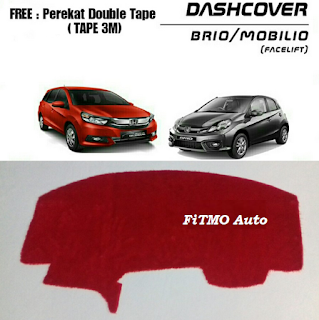The Porsche 911 combines driving excitement with everyday comfort. It's our top choice for enthusiasts who want a high-performance sports car for daily driving. The latest-generation model, designated 997, is the best ever. It was launched for the 2005 model year, and the engines have been upgraded over the past two model years. Internally, Porsche calls the current model the 997, version 2.
For 2009, the Carrera and Carrera S models received revised engines and a new dual-clutch automated manual transmission called the PDK, or Porsche Doppel Kupplungsgetreibe. For 2010, it's the 911 Turbo's turn. Also new for 2010 is the latest-generation of the high-performance 911 GT3, now with more power and an even racier GT3 RS variant. New for 2010 are steering wheel shift paddles for the PDK, an improvement over the old buttons.
The 2010 Porsche 911 Turbo exchanges a 3.6-liter engine for a 3.8, now with direct injection and 500 horsepower, 20 more than 2009. The exterior of the Turbo is slightly modified for 2010 with new mirrors, bi-xenon headlights and LED taillights. New options include active engine mounts and Porsche Torque Vectoring system that applies brakes to the inside wheel in turns.
The 2010 Porsche 911 lineup presents a wide range of models. Coupes and Cabriolets are available, along with a Targa. Base models are fast, S models are even faster, the GT3 faster still, and the Turbo is supercar quick. An ultra high-performance GT2 joins the lineup for 2011. Most models offer endless options. Just about every possible combination is available between coupe and Cabriolet, 3.6-liter and 3.8-liter engines, rear-wheel drive and all-wheel drive. You name it, they've got it, and we love all of them.
The Carrera coupe (sometimes called Carrera 2) is the base model, but owning one is hardly settling for second rate. It's a fantastic sports car, exceedingly enjoyable to drive, and quite comfortable. It is the classic 911. The Carrera 4 adds the traction and handling benefits of all-wheel drive and is loaded with active safety features; it's the best choice for rain and winter weather, an unbeatable foul weather car. Cabriolet versions put the wind in your hair and sun in your face. The Targa features a clever clear roof that slides back to provide a top-down feeling.
The Porsche 911 Turbo is one of the easiest supercars to live with in daily use. It's more user friendly than its competitors, from the Corvette ZR1 to the Ferrari F430 to the Lamborghini Gallardo. Getting in and out of it is relatively easy. It rides smoothly and comfortably by sports car standards. It's happy to putt around town all day at a Buick pace, particularly with the new PDK automated manual transmission. It's easy to drive, whether poking along in rush-hour traffic, streaking down a highway, charging up a mountain road, or working the tires and brakes on a racing circuit. It's neither fragile nor unreliable. Plus, it has a 500-horsepower, turbocharged engine in back. The all-wheel drive and the world's best, most sophisticated brakes make it easy to charge into corners. It really is a terrific car.
The GT3 is the choice for true performance enthusiasts as it sheds weight and is the liveliest 911. The GT3 RS is like this only a little more.
For 2009, the Carrera and Carrera S models received revised engines and a new dual-clutch automated manual transmission called the PDK, or Porsche Doppel Kupplungsgetreibe. For 2010, it's the 911 Turbo's turn. Also new for 2010 is the latest-generation of the high-performance 911 GT3, now with more power and an even racier GT3 RS variant. New for 2010 are steering wheel shift paddles for the PDK, an improvement over the old buttons.
The 2010 Porsche 911 Turbo exchanges a 3.6-liter engine for a 3.8, now with direct injection and 500 horsepower, 20 more than 2009. The exterior of the Turbo is slightly modified for 2010 with new mirrors, bi-xenon headlights and LED taillights. New options include active engine mounts and Porsche Torque Vectoring system that applies brakes to the inside wheel in turns.
The 2010 Porsche 911 lineup presents a wide range of models. Coupes and Cabriolets are available, along with a Targa. Base models are fast, S models are even faster, the GT3 faster still, and the Turbo is supercar quick. An ultra high-performance GT2 joins the lineup for 2011. Most models offer endless options. Just about every possible combination is available between coupe and Cabriolet, 3.6-liter and 3.8-liter engines, rear-wheel drive and all-wheel drive. You name it, they've got it, and we love all of them.
The Carrera coupe (sometimes called Carrera 2) is the base model, but owning one is hardly settling for second rate. It's a fantastic sports car, exceedingly enjoyable to drive, and quite comfortable. It is the classic 911. The Carrera 4 adds the traction and handling benefits of all-wheel drive and is loaded with active safety features; it's the best choice for rain and winter weather, an unbeatable foul weather car. Cabriolet versions put the wind in your hair and sun in your face. The Targa features a clever clear roof that slides back to provide a top-down feeling.
The Porsche 911 Turbo is one of the easiest supercars to live with in daily use. It's more user friendly than its competitors, from the Corvette ZR1 to the Ferrari F430 to the Lamborghini Gallardo. Getting in and out of it is relatively easy. It rides smoothly and comfortably by sports car standards. It's happy to putt around town all day at a Buick pace, particularly with the new PDK automated manual transmission. It's easy to drive, whether poking along in rush-hour traffic, streaking down a highway, charging up a mountain road, or working the tires and brakes on a racing circuit. It's neither fragile nor unreliable. Plus, it has a 500-horsepower, turbocharged engine in back. The all-wheel drive and the world's best, most sophisticated brakes make it easy to charge into corners. It really is a terrific car.
The GT3 is the choice for true performance enthusiasts as it sheds weight and is the liveliest 911. The GT3 RS is like this only a little more.
 RSS Feed
RSS Feed Twitter
Twitter






 Wednesday, February 23, 2011
Wednesday, February 23, 2011
 Samipodo
Samipodo

0 komentar:
Post a Comment